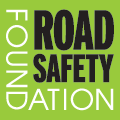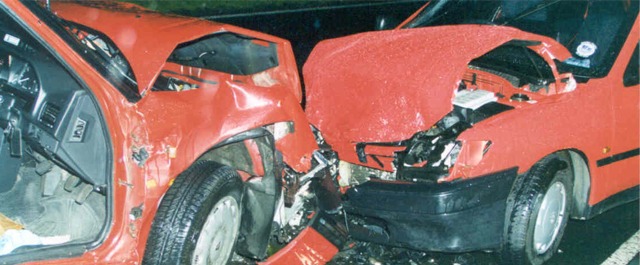SAFE ROAD DESIGN CAN SAVE EUROPE €50BN EVERY YEAR
- Safe road design could cut annual road deaths and injuries by 50,000
- Safe road design could save €50bn in crash costs annually
- Europe’s new 10-year plan must incorporate safe road design
- Europe-wide maps of risky roads becoming available
Europe can cut its toll of road deaths and serious injuries by a third simply by investing in better road design, saving 150 lives and serious injuries a day and Europe’s economy €50bn a year.
According to the new European Campaign for Safe Road Design launched today (4 June 2009) at the FIA EuroCouncil in Copenhagen a third of Europe’s serious injuries or fatalities on the roads are preventable over the next 10 years. All it takes, according to the European Campaign for Safe Road Design, is a modest investment in simple safety engineering – primarily in safe road and junction layouts and equipment like safety barriers. Top designers believe Europe’s roads must be more ‘self-explaining’ and ‘forgiving’ so that routine human driving errors do not carry a death sentence.
In the last 10 years, two million people have been killed or seriously injured in road crashes in the countries of the European Union alone. The financial cost of road crashes is two per cent of European GDP annually – more than the amount each of Europe’s nations typically spends on primary schools or doctors.
The European Campaign for Safe Road Design says that the annual toll of 200,000 deaths and serious injuries a year will continue if effective action is not taken on safe road design, particularly on roads outside major towns where two-thirds of European road deaths occur. Deaths are concentrated on main national or regional roads which can be easily targeted.
Chairman of the campaign, John Dawson says: “A safe road system needs road users who obey traffic law, manufacturers who provide safe vehicles and authorities who provide safe roads. European traffic law has been tightening up driver behaviour. Safety standards of new vehicles have soared from a typical two-star to typical four-star NCAP crash test rating.
“As the European Commission consults on its road safety strategy beyond 2010, at the centre of discussions must be the delivery of safe roads. We don’t need new laws. We need effective large-scale action on what we know works. We need to make transparent where there are risky roads and to guide to where urgent action is needed.
“People don’t need to die routinely just because roads are missing simple safety features,” concludes Dawson.
Achieving a safe road system in Europe
Two thirds of road deaths are outside towns and are concentrated on busy main roads. In Europe’s high income countries deaths are concentrated on main regional roads. In Europe’s middle income countries the deaths are concentrated on main national routes.
Over the last five years, EuroRAP, the European Road Assessment Programme, has inspected roads across Europe. Detailed analysis in sample countries across Europe, and subsequent decisions by governments to act, has allowed EuroRAP to be confident that there is no country in Europe that cannot save many lives quickly by targeting risky roads with affordable safety engineering. A map revealing risky roads across Europe will be published in autumn 2009 and presented to the newly elected European Parliament as the Commission finalises its road safety strategy.
The Campaign is calling for a safe road infrastructure initiative targeted on the busy roads where most deaths occur. Risky stretches of the Trans European Road Network will be among the first to be identified later this year by the Campaign.
“Not only are the social and economic returns from removing risky roads among the highest in the economy, the projects are ‘quick to shovel’ and ideal for helping put Europe back to work” says John Dawson. “The top-performing countries in road safety have been the first to make safe road design programmes central to road safety strategy beyond 2010 in a decade of action. Now we need the European Commission to help promote safe road design initiatives to all European governments.”
Notes to editors:
The Campaign website www.saferoaddesign.eu goes live from 00.01 on 4 June 2009.
The cost of handling road crashes is EUR160bn per year – two percent of European GDP. The proposed programme seeks to cut deaths and serious injuries by up to one-third, saving the European economy EUR20bn per annum by 2020 in a decade of action.
The OECD Report “Towards Zero: Ambitious Road Safety targets and the Safe System Approach” published in September 2008 calls for competent road authorities to understand the linkages between crash rates and road protection.
Following publication of EuroRAP analysis in the Netherlands, the top-performing Dutch government announced in March 2008 that roads with less than a 2-star EuroRAP rating would be eliminated from the Dutch national network by 2020.
The British government road safety strategy announced in April 2009, following EuroRAP analysis of 50,000kms of main road network with high concentrations of road deaths, that safe road design initiatives to “strengthen weak links in the network” would be a key component of national safety strategy beyond 2010.
EuroRAP analysis in Britain, Netherlands, Poland, Czech Republic, Slovakia and Serbia is confirming that deaths are concentrated on highly targetable road networks throughout Europe. As part of the European Road Safety Atlas project, a project co-funded by the European Commission, EuroRAP will publish mapping in at least 10 European countries in 2009 together with analysis to confirm the scale of the opportunity to reduce road trauma.
Road crashes are the leading cause of death in young adults and the age profile of road victims is such that they can readily require half a century of care with much reduced quality of life.
The estimated EUR60bn cost of road crashes excludes the substantial disruption and subsequent economic cost of road accidents. The additional costs amount to many billions more. In as much as money can ever describe the sudden, violent nature of road crashes, the economic costs do include the cost of pain, grief and suffering as awarded by courts.
Case studies from around the world are available.


